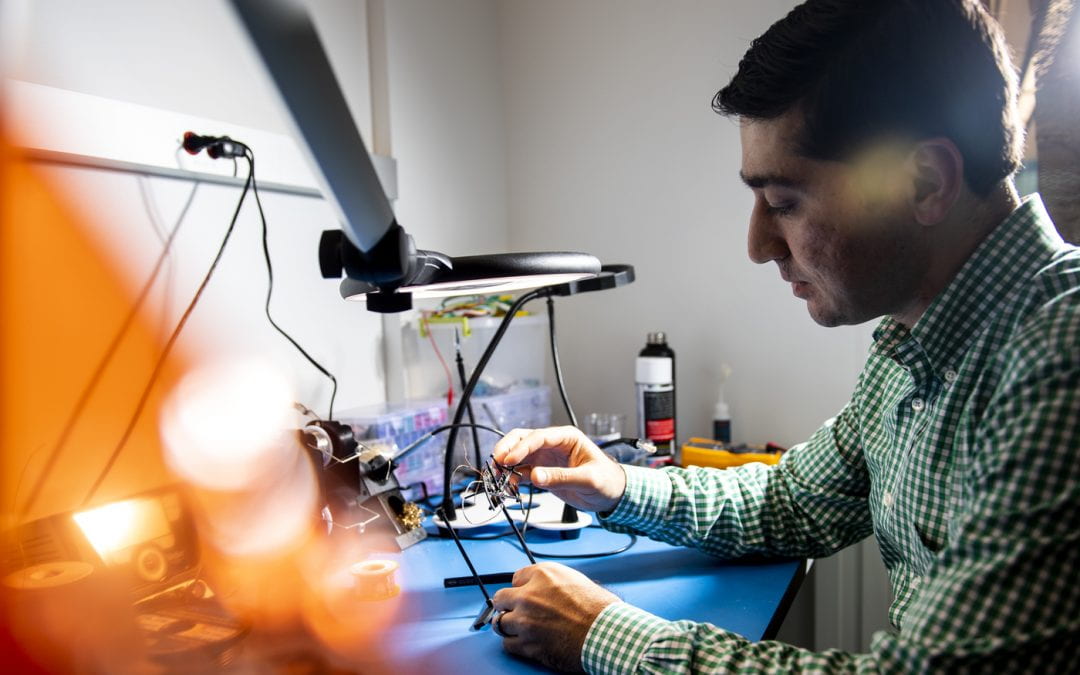Zoology has transitioned from serving as an inspiration to being a blueprint when it comes to the field of robotics. In the past decade, robotic locomotion has reached new heights by mimicking the biology of animals.
When it comes to aerial systems, a lay person would look to birds – perhaps an eagle, a hawk or even a vulture – to serve as the perfect inspiration for scientists and engineers in this field. Bats would surely be the last to appear on the radar – no pun intended. But perhaps looking beyond the conventional is what innovation essentially is.
Alireza Ramezani, an assistant professor at the Department of Electrical & Computer Engineering at Northeastern University, has been creating innovative robots for years. Through observing how bats land and take flight, he has achieved a breakthrough in drone landing technology. At his lab Silicon Synapse, which focuses on developing bio-inspired robots, Remezani has developed landing gear designs for drones that allow for “seamless and zero energy take-off.”

Source: Centre for Research and Innovation
According to Ramezani, his technology mimics the ability of bats to leverage gravity to their advantage. “We looked at the way bats land on a structure or how they approach landing points in a cave. They do sort of a flip turn which is called the heel above head maneuver. It is unique to them and allows them to use gravity to hang from a structure with minimal effort,” Ramezani told NUMedia.
Elaborating further on how bats maximize efficiency, Ramezani said, “Bats are unique in the sense that during downstrokes they open their arms and during upstrokes they close their arms. That allows them maximum efficiency. We have been able to capture that characteristic.”
The technology essentially allows drones to land on unconventional surfaces, which could pave the way for a variety of applications in different types of reconnaissance. “From a robot design standpoint, it’s a unique research problem that was never studied,” he said.
Unlike typical quad copters, Ramezani ‘s technology could also allow for added stealth with respect to controlling the noise often associated with drones. “Let’s say you have structures that don’t have flat surfaces, for instance construction zones. You want to have a vantage point for monitory reconnaissance that takes place for day and then you want to easily come back to flight – that’s a perfect solution for such scenarios. You think about achieving a vantage point and you stay there quietly. Typically quad copters have propellers that don’t allow them to operate quietly. Something like this can stay on a surface quietly, and would give stealth capabilities. “
What’s next for his work? Finding even more nature-inspired technical solutions. The project on which he and his lab are currently working has a fascinating set of challenges. “Assuming the vehicle can land, one interesting property of lift off from landing points is that gravity helps you to fall down and that turns around the problem to reorienting yourself. We are trying to integrate two subsets [of types of motion]. It’s an ongoing research; it takes time. The major challenge is how to land and how to come across that heel above head maneuver. The next challenge would be how to detach from the structure,” and start flying, Ramezani said.
With their current success, it’s only a matter of time before we’ll be looking up at the sky and seeing robotic bats – or, perhaps, not noticing them there at all.
